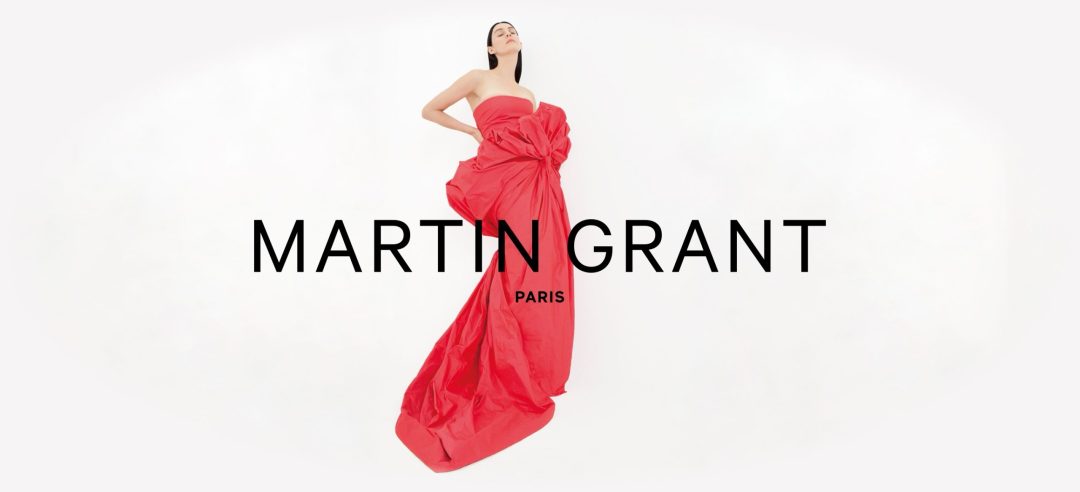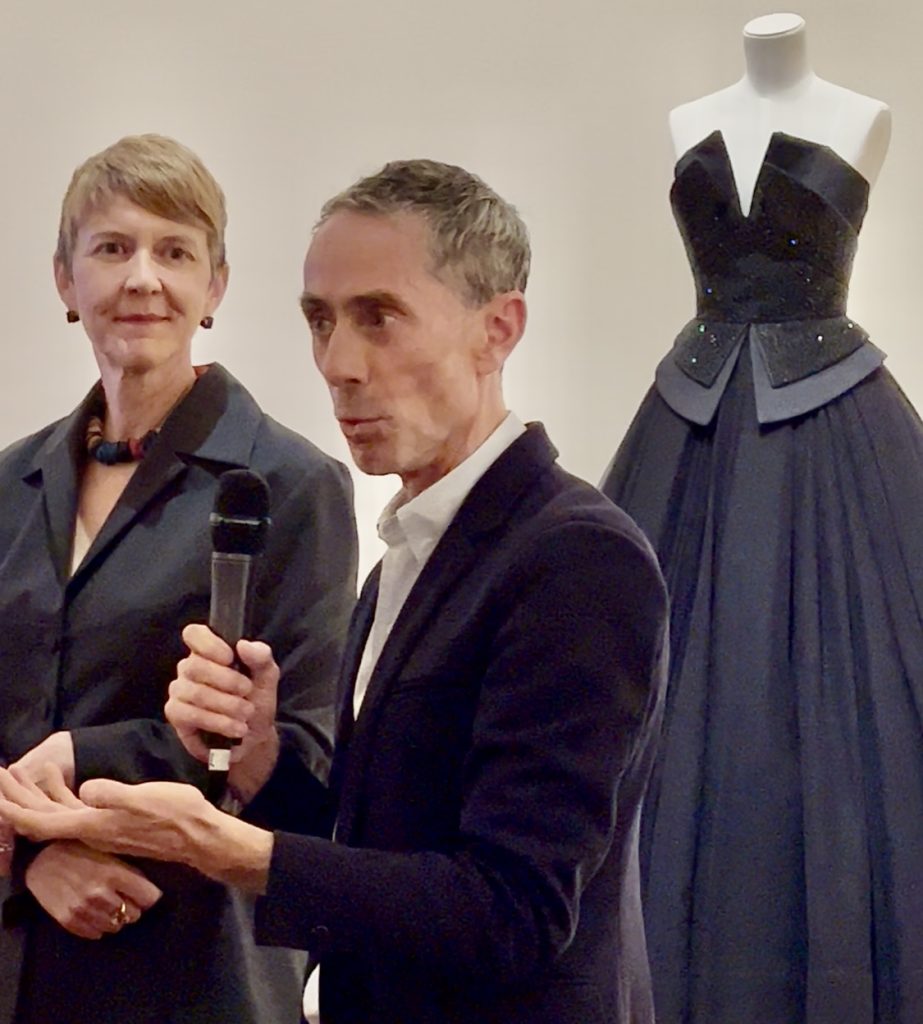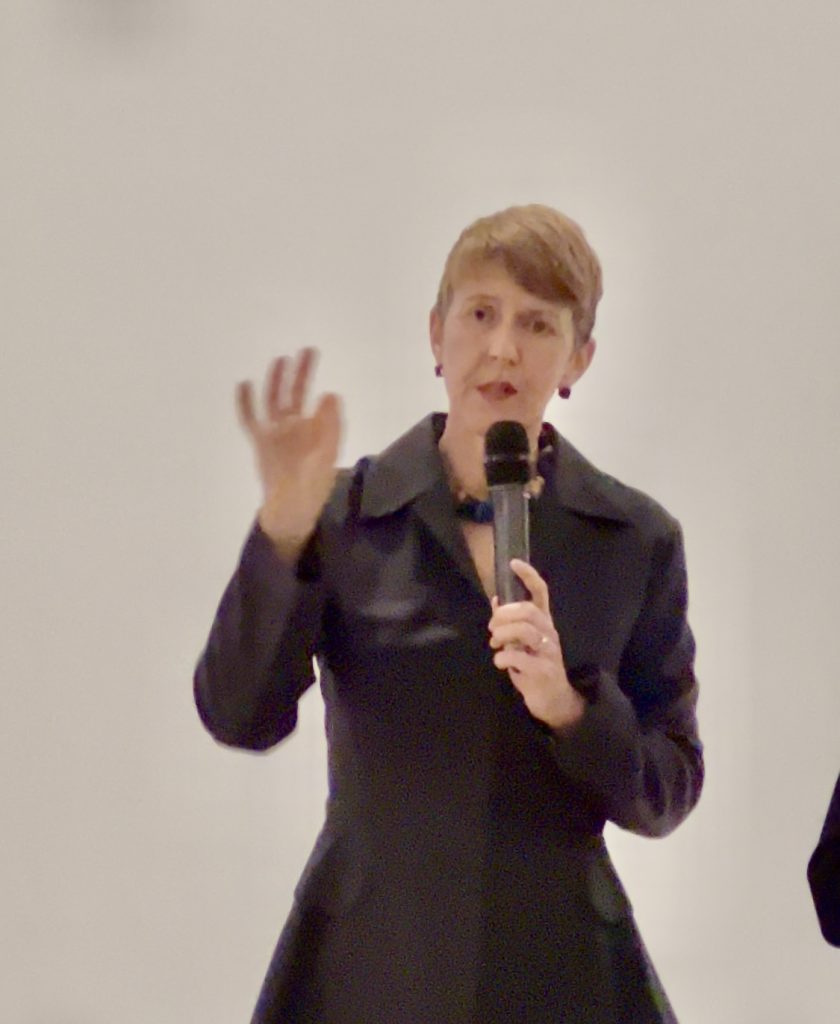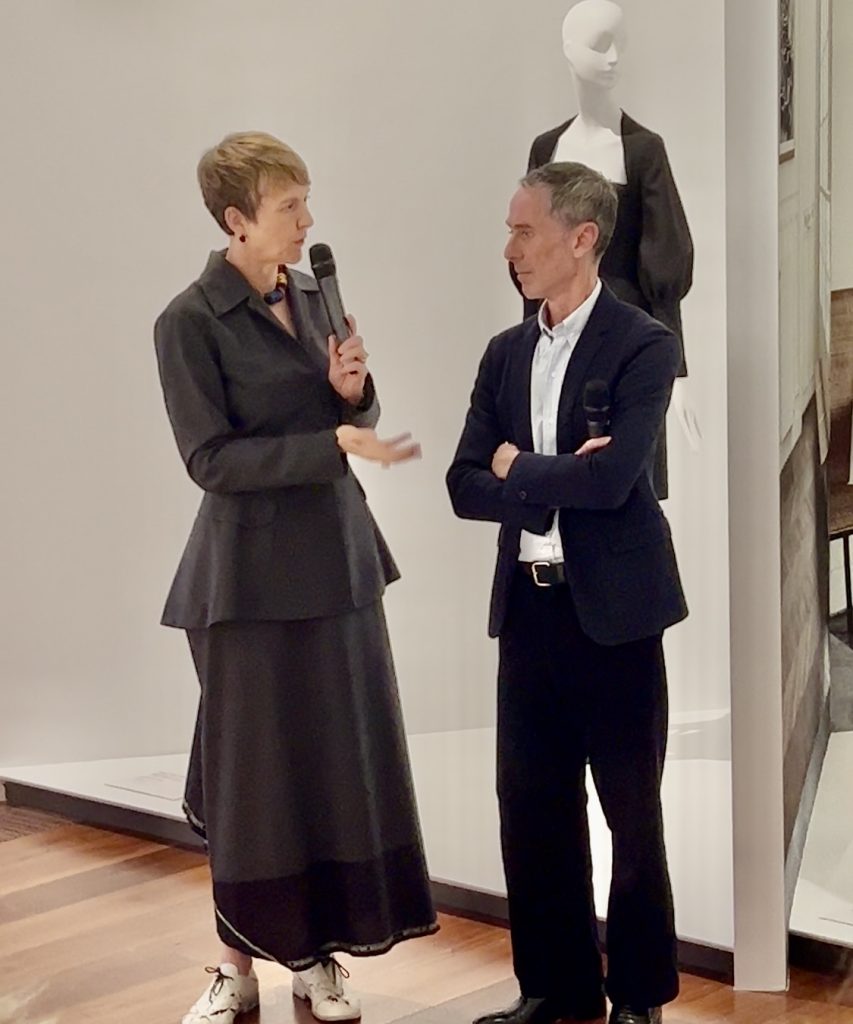Iconic Paris designer Martin Grant is back in Melbourne for a major retrospective of his work and life at the National Gallery of Victoria’s Ian Potter Centre until January 26. Here Janice Breen Burns meets the much-loved Martin and a handful of his many creative cohorts, tracking from first glimmers of his genius in the 1980s, forward to his fame in gratifyingly full bloom today. (This story first appeared in arts/culture section Spectrum, Nine Media, The Age/Sydney Morning Herald.)

He was ridiculously young. Fifteen, 16, 19, clubbing with the cool crowd, running his own fashion label renowned for its forensic grasp of couture crafts, its mo-derne take on Dior-esque glamour. He was already, all about flattering cuts, sharp feminine proportions, gracefully controlled draping and kinetic effects. Didn’t like colour much, barely any patterns either; preferring no distraction from the pure forms, perfect silhouettes.
Imagine. So mature. And still, just a slip of a lad.
Even now, Melbourne-born Paris-based designer Martin Grant, aged 58, fresh from distilling 40-odd years of his life and work into a major retrospective due to open at the National Gallery of Victoria next week, seems pleasantly puzzled by his own precocious teen self.
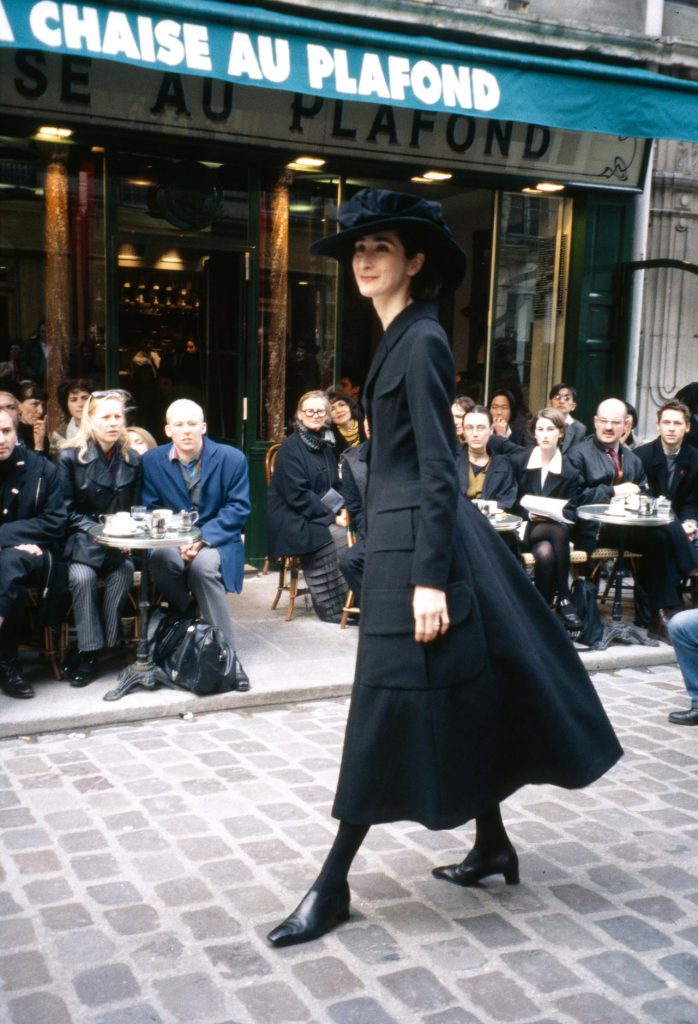
“I’m kind of shocked that I was doing what I was doing so young,” he says. “I do remember people being surprised; an 18 year old boy doing structured suiting and these creations of – elegance…must’ve been a shock to some.”
Grant is a warm, easy talker, on screen with me now from Paris where he’s been based since the late 1980s. These days he ping-pongs between his Paris apartment and atelier, and the home and lush garden he shares with his partner of 13 years in Arles in the South of France, and of course, Melbourne, most recently to work on the NGV exhibition with fashion and textiles curator Katie Somerville.
It’s the NGV’s second significant exhibition of Grant’s work since 2005, this one triggered by what Somerville calls Grant’s “glorious gift” last year of more than 200 archival garments and a rare nest-egg of intriguing adjunct materials: look-books, sketches, runway footage, photographs and press clippings, most destined for the exhibition.
“The name Martin Grant is not in the general public’s wider understanding of a (designer) who’s chased fashion stardom,” Somerville says. “He’s never been interested in playing that (fame) game…he’s actually declined offers to do that. He sees himself more as someone who’s making clothes, beautifully, in extraordinary fabrics, clothes that people will hold on to for 30 years and later, maybe, even lend them to a museum….”

Only occasionally has Grant stepped out of his atelier into a more complicated business model: a decade designing private label collections for the (now-defunct) New York retail fashion bastion Barneys, for example, and back home, his 2014 commission to design Qantas’s chic tailored (current) uniforms.
He has also, famously, turned down offers with potential to make him a household name including, in 2004, creative leadership of designer Céline Vipiana’s legacy Parisian fashion house, Celine (established in 1945). His refusal, ostensibly, was not because work loads and KPIs on fashion’s upper luxury echelons can be notoriously soul-sucking either, which they can. It’s that Grant has a vision and simply, stubbornly, sticks to it.
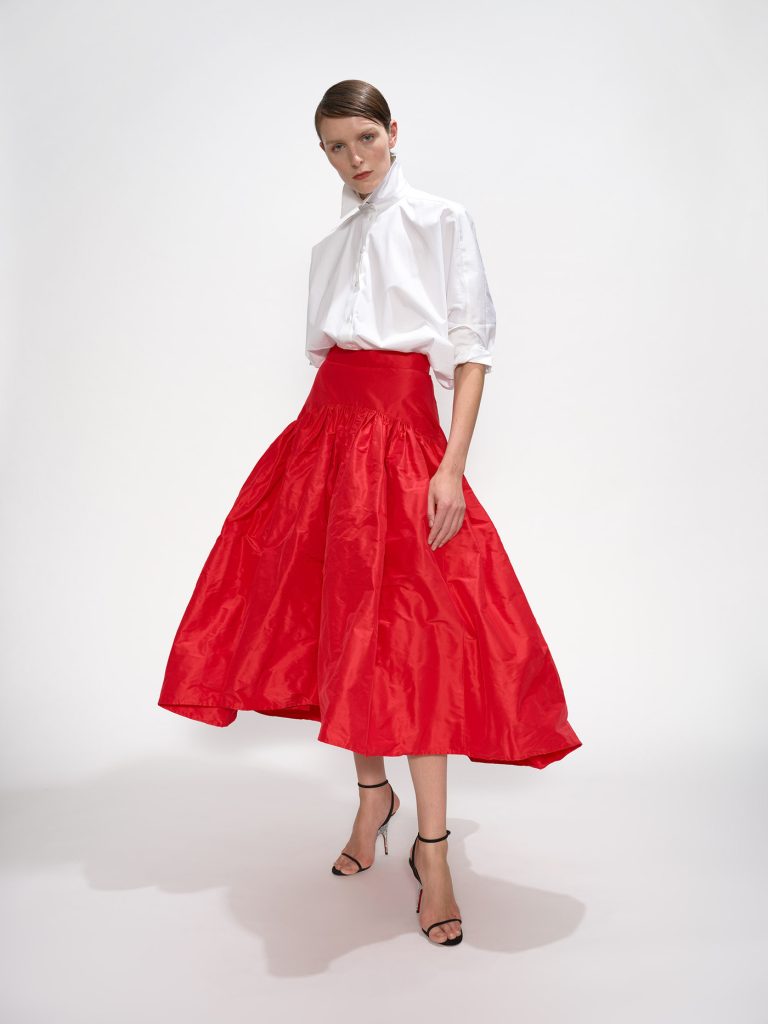
“There’s a thread that has run right through my work from the very beginning,” he says. “One aspect is that couture sensibility you see, about the handwork and the number of people that work on a garment…it’s also the references I’ve had since a very early age; the 50s, through the 60s…and then there’s that sculptural thing that I think is sort of innate…the way I work in three dimensions; the form and silhouette, volume and structure; they’re what my work is about as opposed to decoration…”
His output is spectacularly non-spectacular: impeccably cut edgy fashion most seductive to connoisseurs, less so to lovers of flashy global logos. “It’s for women that love to express their personal style, not; “Look what I’ve got on my back,” quips local fashion legend and Melbourne retailer, Christine Barro. She is the only bricks-and-mortar supplier of Grant’s ready-to-wear collections in Australia and firmly believes, as many do, he is a fashion genius. “He’s stuck to his DNA, his signature; the cut, the fabrications..and people are just blown away by his understanding of the human form…”.

Barro has known Grant since a boy; “When Melbourne was one big nightclub” and racked his Parisian designs since 2011 when she switched up stocks in her iconic “Christine” boutique from best-in-the-world accessories, to include a tiny cluster of best-in-the-world fashion clothing.
You could say Barro is at the coal-face where Grant’s designs meet the fussy market of impeccably groomed real women who consume them. Her observations, then, are the sort of frank, fluff-free, highly detailed feedback you rarely hear applied to museum fashion exhibits. “You have to mention his fabulous raglan sleeve,” she says. “It is so flattering, so size forgiving, and he has an amazing skirt at the moment which is – it’s just so glamorous with a lovely swooooosh…or, you could almost just have a wardrobe of his coats; they make you feel so present.”

The mechanics of Grant’s “DNA” are most present in his coats and Somerville demonstrates how it manifest across his oeuvre through the four upper-floor rooms of the Martin Grant exhibition in the NGV’s Ian Potter Centre. All the sculptural forms, from quietly chic to the controlled operatic volumes that have thrummed through his work since the 1980s are represented, from the classic French caban or pea coat, the archetypal trench, the Victorian-esque crinoline-cut tailored coat that is both faintly gothic and reminiscent of Dior’s New Look but, inarguably, a la Martin Grant.
Somerville even took a stab at locating Grant’s creative origins in the exhibition with a matrix wall of his kindergarten paintings. Girl after girl dabbed out in fully-foofed crinoline ballgowns. “They’re all very princessy aren’t they,” Grant laughs. “And very colourful, which is unusual for me.” He doesn’t remember painting them; “But I do remember a old record of (Johann Sebastian) Bach’s music with a ballroom scene on the cover and women in crinolines…I remember almost stealing it from my parents I was just so intrigued by a world where women would wear these gowns…”

By his teens, little Martin’s dream of swishing crinolines was intersected by something wilder, edgier, more potent and more compelling: “I remember I was so hungry for something…Something more urban, more mmmmm cultural…I was so into the music scene, the whole punk scene, all that was happening in town (Melbourne); people were dressing up, crazy, nightclubs…I just wanted to be part of what was going on…”
It was the early 1980s and Melbourne’s punkish counter-culture was boiling over, making a name for the city as an off-beat hot spot of The New in art, design, music, magazines, filmmaking, fashion, night life. “A fertile hot-bed of creativity,” says Somerville.
Grant dropped out of Blackburn high school and headed for the revolution (admittedly a 25 cent train ride away). He left behind an idyllic childhood spent “making things, doing things” in the classic mid-century modern Robin Boyd house he’d lived in with mum, a teacher, dad, a history professor, three sisters who were cheerful models of his earliest fashion experiments, and grandmother, an accomplished seamstress who lived near enough to the Grants to pass on some of her elegant intuition and practical skills.

Grant’s plunge into the socio-cultural phenomenon of 1980s Melbourne was also his first bout of big-fish-small-pond celebrity. “Such a frenzied time,” he remembers. “I was meeting all these artists, musicians, fashion people…and I was the youngest in that whole nightclub and music scene…”
Apparently the high school dropout with neo-Dior vision and miraculous self-taught pattern-making skills was just so damned clever and likeable with it, his slightly older elders couldn’t help but embrace, mentor and clamour to collaborate with him.
Artist and fashion designer Desbina Collins cleared space in her studio for him to work. Legendary Fashion Design Council founders Robert Pearce, Robert Buckingham and Kate Durham, secured spots for Grant’s collections in their frenetic, seminal new-era runway shows. Gifted milliner Tamasine Dale collaborated with him. Photographer Polly Borland immortalised him. Artist Jenny Watson painted him.

Between Inflation and Collins Street’s Stalbridge Chambers (known as Strawbridge), the labyrinthine building where many of the city’s cultural disruptors had their studios, Grant remembers falling into deep friendships and the habit of collaborating with artists and other creatives that would become a natural adjunct to his life and work.
One of many friends who flew in for the exhibition opening, Los Angeles-based artist and photographer Polly Borland, remembers meeting the “innocent boy” with the “ferocious sort of creative energy”, when he was just 15 and her own career was rocketing in her early 20s.
“We became pretty good friends pretty much straight away,” she recalls. “This very gifted young person. He was quite precocious; he had this innate confidence and a sort of unstoppable creativity that was just – joyful. He’d say he learned to sew from his grandmother but, everything else was just innate: this technical ability he had and his dedication to the craft and the quality of everything he was doing… at one point (later) he went off and learned from a tailor how to make a suit properly – such a complicated thing – but everything he did, he always kept developing and learning….”

Borland remembers Grant, paradoxically, as almost childlike in a world of wildly creative adults but able to establish warm rapport with virtually anyone. “He seemed so young, without any significant adult presence in his own life, but also fiercely independent,” she says. “I actually felt quite motherly towards him at first, which probably wasn’t good because we were pretty heavily into partying!”
Borland and Grant became inseparable, riding their pushbikes (neither could drive) from project to project every day, party to party, club to club, every night. “We had this communication; this creativity and the love of beautiful things..” she says. “I was doing portraits for Vogue and The Age and all these jobs but I was also constantly photographing him and we were also doing our own fashion shoots using friends, you know, as models; Martin styling everything. He had just a gorgeous eye. We just loved what we did.”

Eventually Borland moved to London, a cliche career move for Melbourne’s most radical creatives at the time, and on to an international reputation for portrait and fashion photography. Grant stayed.
By age 20, not surprisingly he felt something akin to burn-out. “It was such an intense four years,” he says. “Which was great but, also, quite daunting…I kind of needed to pull back…Do I want to be doing this forever?”
He slowed, trimmed his fashion commitments, enrolled in the Victorian College of the Arts to study sculpture. “And I realised actually, that’s what I’d been doing in fashion all along, the same kind of sculptural form; the silhouette, the volume, the structure…it’s sculpture.”
Two years of VCA and he was hungry again, mind made up, ready to move on. London first, then Paris; he picked up offers with small bright brands in the market for his miraculous self-taught pattern-making skills (the result of what Somerville says is his; “Amazing math brain…”) including Christian Dior menswear designer at the time, Anne Schramm.
Eventually Grant opened his first tiny atelier in the Marais and immediately, by that mysterious moth-to-flame method shared among true fashionistocrats, began accumulating connoissuers, mentors, admirers, creative collaborators and, most gratifyingly, an international clique of paying clients, many of whom he would have and hold for life.
The late Vogue editor-at-large Andre Leon Talley was one of the first, showering praise for Grant’s; “Precise, sharp and full of grace” designs. He introduced Grant to Naomi Campbell who modelled for him, and circles of fashionistocrats who befriended him. Luxury shoe designer Christian Louboutin, lent his collection for Grant’s Paris shows. Renowned French artist Sarah Moon immortalised Grant’s work in photographs of extraordinary, ethereal beauty. (One “La Robe Rouge, 2010, features in the exhibition.) Lee Radziwell, Jacqueline Kennedy’s “even more stylish” sister and the “one of impeccable taste” among author Truman Capote’s iconic “swans”, became a loyal client and close confidante before her death in 2019.
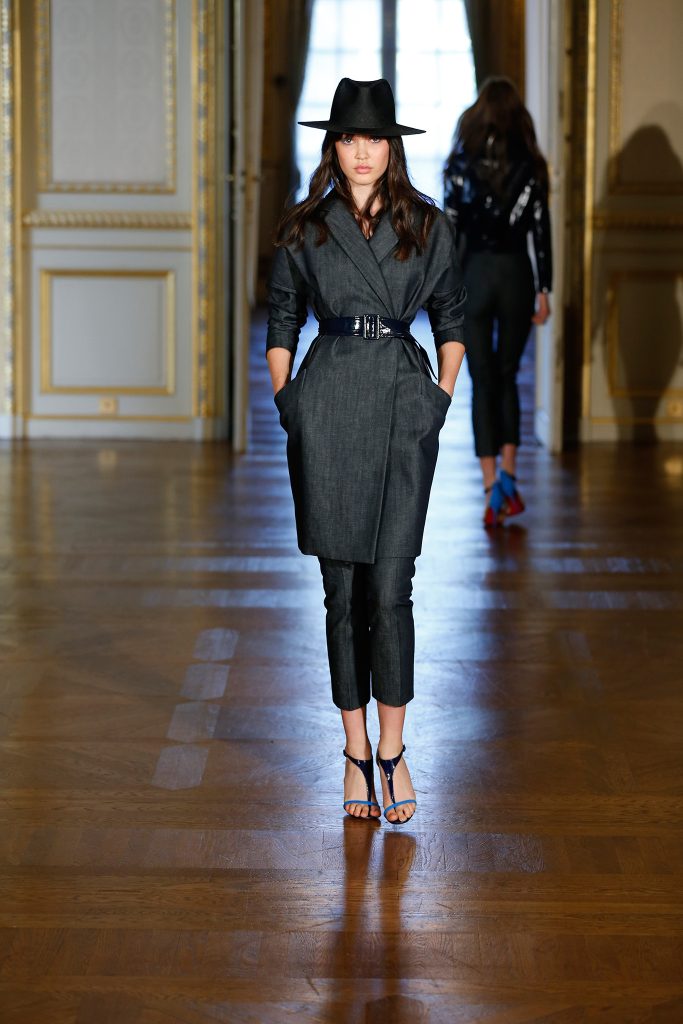
Cate Blanchett, Tilda Swinton, Juliette Binoche, Emma Stone, Blake Lively, Isabella Rossellini, Megan Duchess of Sussex, Queen Rania of Jordan, Sondra Bullock, Lady Gaga, many others famous and not so, have all hunted Grant down for their own reasons.
Grant however, says don’t look for signs that any of them are his “muse” or the archetypal woman for whom he designs.
“I really don’t like the word,” he says. “I don’t have a specific type of woman that I design for at all. Women are very varied! The thing my friends have in common is they’re strong personalities, strong personal style, strong opinions. So, often when I’m working on something I might think, yes, “This will be great for So-and-So..” but, when I’m working on a whole collection, it’s a mix of all the women that I know that I kind of synthesise into that collection…”
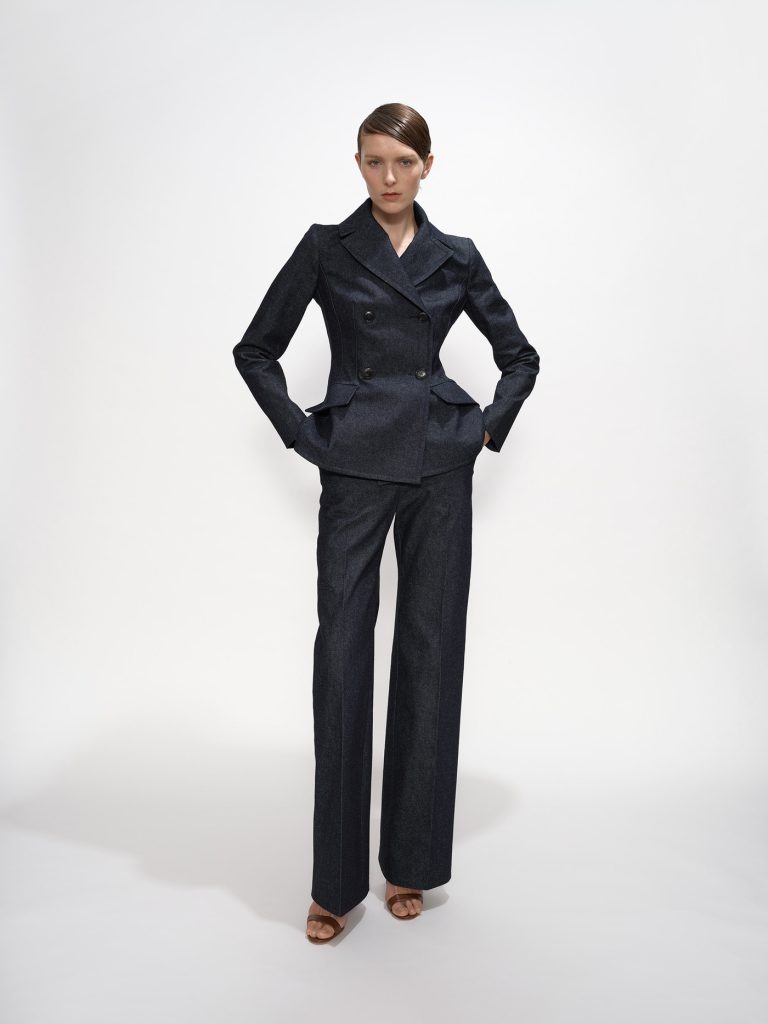
Picking through the NGV archive with Somerville for the exhibition, Grant says he found himself drawn to the “show pieces” he’s created in 40-odd years of designing. (A case in point is the exhibition’s marvellous show plate, a lolly-pink silk taffeta “Look 23, 2010” photographed on model Susie Bick by Polly Borland). These are the more extravagant designs used to visually spark up a runway line-up of simpler forms with subtler details that exude couture craft and ingenuity but tend to have a lower visual key.
Suddenly, Grant seems worried I could mistake his “showpieces” for fashion traits most decidedly NOT in his DNA. “What I actually love most is the commercial pieces. I love to hear about the pieces I make that people wear every day, my classic coats and suits and tailoring… I love it when they tell me; “I’ve been wearing this for years and I love it, love the quality..”
That’s what I love too…”

